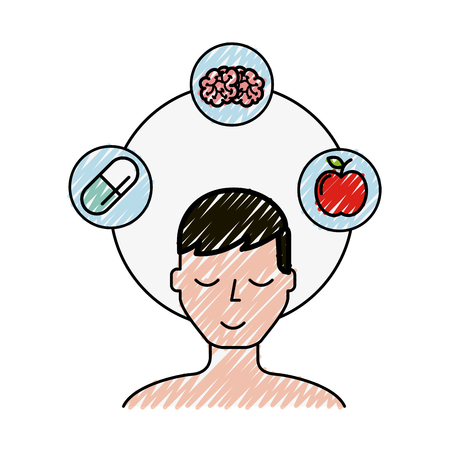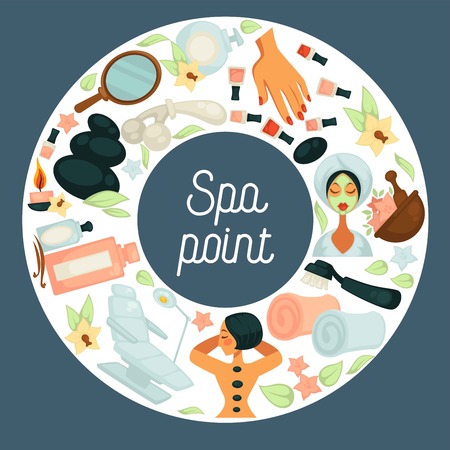Introduction to Multicultural Beauty in the UK
Beauty standards in the UK are not just a reflection of current trends—they are a living narrative woven through centuries of migration, colonial history, and cultural exchange. Unlike many countries with more homogeneous populations, the UK’s aesthetic expectations have been shaped by waves of diverse communities settling across England, Scotland, Wales, and Northern Ireland. From South Asian, African, and Caribbean influences to European and Middle Eastern aesthetics, each community has contributed something unique to the nation’s understanding of beauty.
This multicultural foundation means that what is considered beautiful in one British city may look very different from another, and even within neighbourhoods, ideals shift according to cultural backgrounds. The UK’s openness to different cultures—sometimes celebrated, sometimes contested—has created a beauty landscape where traditional norms are constantly questioned and redefined. In this context, British beauty standards are not static; they adapt as the country itself evolves. Understanding this diversity is key to appreciating why beauty in the UK is so uniquely multifaceted—and why navigating these expectations requires both sensitivity and awareness of Britain’s complex social tapestry.
2. Historic Influences on British Beauty Ideals
Understanding the UK’s contemporary beauty standards requires delving into its complex history, where colonialism, global migration, and shifting societal norms have all played significant roles. Over the centuries, Britain’s aesthetic ideals have evolved, shaped by both internal developments and external encounters. During the colonial era, European features were often positioned as aspirational within both Britain and its colonies. This legacy has left an indelible mark on what is traditionally perceived as “British beauty.” However, with waves of migration from South Asia, the Caribbean, Africa, and Eastern Europe throughout the 20th and 21st centuries, the definition of beauty in the UK has become increasingly multifaceted.
Historic Milestones Shaping Beauty Norms
Era |
Key Influences |
Impact on Beauty Standards |
|---|---|---|
| Victorian (19th Century) | Colonial expansion, class stratification | Pale skin, delicate features signified status; European-centric ideals dominate |
| Post-War (1945-1960s) | Migration from Commonwealth nations | Subtle broadening of acceptable features; introduction of new hair textures and skin tones in public spaces |
| Late 20th Century | Globalisation, media influence | Diverse aesthetics appear in fashion/media; gradual inclusion but Eurocentric norms persist |
| 21st Century | Social media, activism for representation | Celebration of multicultural looks; more inclusive but still facing challenges with tokenism and stereotypes |
The Ongoing Legacy of Colonialism and Migration
The British Empire’s reach meant that not only did it export its own ideals abroad, but it also absorbed influences from across its territories. For example, the popularity of certain hairstyles or skin treatments can often be traced back to cultural exchanges during periods of colonial contact. In modern Britain, cities like London, Birmingham, and Manchester serve as melting pots where Afro-Caribbean braids, South Asian henna art, and Eastern European skincare traditions coexist. While older generations may hold onto more rigid perceptions rooted in Britain’s imperial past, younger generations are generally more open to a wider spectrum of beauty expressions—a shift accelerated by digital culture and grassroots campaigns for better representation.

3. The Media, Pop Culture, and Representation
When examining the landscape of multicultural beauty standards in the UK, it’s impossible to ignore the immense influence of media and popular culture. British television, film, fashion magazines, and digital platforms act as both mirrors and moulders of societal perceptions about beauty. Historically, mainstream UK media has been criticised for promoting a narrow set of aesthetic ideals—often centred around Eurocentric features and body types. However, there has been a clear shift over recent years towards more inclusive representation.
British pop culture icons, from music stars to actors and influencers, increasingly reflect the country’s ethnic diversity. Shows like Top Boy, the global impact of British-Nigerian artists such as Little Simz, and campaigns by high street brands featuring models of all backgrounds are reshaping what is celebrated as beautiful in the public eye. Social media platforms amplify this trend by giving visibility to previously underrepresented communities and enabling individuals to curate their own narratives around appearance.
The effect is twofold: on one hand, these changes challenge outdated norms and empower people from minority backgrounds to see themselves reflected in aspirational spaces; on the other, they generate important conversations about tokenism versus genuine inclusion. While progress is ongoing, UK-based media now actively negotiates multiculturalism—sometimes clumsily, sometimes with real nuance—signalling that beauty standards here are becoming less monolithic and more attuned to the nation’s actual demographic fabric.
4. Everyday Experiences and Regional Differences
When exploring multicultural beauty standards across the UK, it’s essential to consider how everyday experiences and regional differences shape perceptions of attractiveness. The UK is not a monolith; rather, its aesthetic expectations are intricately woven from both national influences and local community values. These differences are especially pronounced when comparing urban and rural areas, as well as the distinct nations within the UK: England, Scotland, Wales, and Northern Ireland.
Urban vs Rural: Contrasting Approaches
Urban centres like London, Manchester, and Birmingham are often melting pots of cultures, where global trends intersect with local traditions. In these cities, beauty standards tend to be more experimental and inclusive, influenced by diverse immigrant communities and fast-paced lifestyle changes. Conversely, rural communities might lean towards traditional or regionally historic beauty ideals, often shaped by longstanding social norms and limited exposure to international media.
| Urban Areas | Rural Areas | |
|---|---|---|
| Diversity of Standards | High – multiple ethnic groups contribute to varied expectations | Lower – more homogenous populations influence narrower standards |
| Influence of Media | Strong international influence via social media & fashion industries | Mainly local or national media impact; slower adoption of global trends |
| Community Attitudes | Open-mindedness towards unconventional looks; acceptance of individuality | Preference for traditional or “natural” looks; conformity more valued |
Nations Within the UK: Unique Aesthetic Lenses
The four nations of the UK each bring their own historical, cultural, and societal influences to notions of beauty:
- England: London’s cosmopolitan flair sets trends nationwide, but regional cities (e.g., Liverpool’s “Scouse brow” or Essex’s glam) also have distinct styles.
- Scotland: Heritage plays a significant role—there’s pride in natural features like freckles or fair skin, while Glasgow embraces both edgy street style and classic elegance.
- Wales: There’s an appreciation for natural beauty tied closely to landscape and Celtic heritage; rural areas may favour understated aesthetics over high glamour.
- Northern Ireland: Community ties remain strong, often leading to subtle but meaningful variations in grooming and makeup preferences between towns and cities.
Adaptation and Negotiation in Daily Life
Navigating these diverse expectations means individuals regularly adapt their appearance depending on context—what’s admired in one setting may be overlooked or even frowned upon in another. For instance, bold fashion choices that thrive in multicultural urban settings might feel out of place in smaller towns where tradition prevails. This negotiation is ongoing, influenced by workplace environments, social circles, family backgrounds, and even the weather.
In conclusion, understanding the UK’s multicultural beauty standards requires attention not only to ethnicity but also to the subtle regional dynamics that play out daily across its varied landscapes. This layered complexity is what makes the UK’s approach to aesthetics both challenging and uniquely rich.
5. Challenges, Stereotypes, and Colourism
The UK’s multicultural society brings a unique richness to beauty standards, but it also introduces significant challenges that individuals must navigate daily. One of the most pervasive issues is the persistence of stereotypes within both the beauty industry and broader cultural narratives. Despite progress in representation, many brands and media outlets still favour Eurocentric features, perpetuating narrow ideals of beauty that can exclude or marginalise people from diverse backgrounds.
Colourism presents another layer of complexity within the UK’s beauty landscape. The preference for lighter skin tones, often rooted in colonial history and reinforced by global media, continues to influence product marketing and consumer behaviour. This bias can be particularly damaging for individuals with darker complexions who may feel pressured to conform to unattainable standards or resort to harmful skin-lightening products.
Inclusivity remains an ongoing challenge. While there have been notable efforts to expand foundation ranges and showcase diverse models, genuine inclusivity goes beyond surface-level representation. It requires systemic changes in hiring practices, advertising strategies, and product development to ensure all identities are respected and celebrated. Many consumers still report feeling underrepresented or tokenised, highlighting the need for deeper industry introspection.
On a social level, these issues intersect with everyday experiences—ranging from microaggressions about hair texture or facial features to overt discrimination in professional settings. Such encounters can impact self-esteem and identity formation, especially among younger generations growing up amidst conflicting messages about beauty and worth.
Ultimately, confronting stereotypes and colourism within the UK’s beauty culture demands collective action—from challenging ingrained biases in our communities to holding brands accountable for authentic representation. Only through honest dialogue and continued advocacy can we move towards a truly inclusive standard of beauty that reflects the UK’s rich diversity.
6. Progressive Movements and Future Directions
As the UK continues to evolve as a multicultural society, progressive movements are playing a pivotal role in reshaping beauty standards. Grassroots campaigns have emerged across cities from Manchester to London, challenging outdated norms and advocating for authentic representation. Initiatives such as #ProudToBeMe and community-led workshops empower individuals to celebrate their unique features, sparking conversations about cultural pride and self-acceptance.
Industry Shifts: From Tokenism to True Inclusion
The beauty industry in the UK has begun responding to these calls for change. Brands are moving beyond tokenistic gestures, increasingly collaborating with influencers from a wide range of backgrounds and launching products that cater to diverse skin tones and hair types. Retailers now prioritise inclusive advertising, ensuring campaigns reflect Britain’s rich tapestry of cultures, accents, and stories.
Celebrating Multicultural Beauty in Everyday Life
Schools and local councils are also contributing by revising dress codes and promoting cultural awareness events. This institutional backing helps normalise differences in appearance—whether through Afro hairstyles or traditional South Asian attire—and encourages acceptance among younger generations.
What Lies Ahead?
The future of beauty in the UK will likely see even more radical shifts. As social media platforms amplify marginalised voices, there is growing pressure on both brands and public figures to act responsibly. The next phase may involve co-creating products with communities, supporting emerging talent from underrepresented groups, and fostering spaces where all identities are genuinely celebrated. Ultimately, redefining beauty in the UK is not just an industry trend but a societal movement—one that invites everyone to participate in shaping what it means to be beautiful in a truly multicultural nation.


